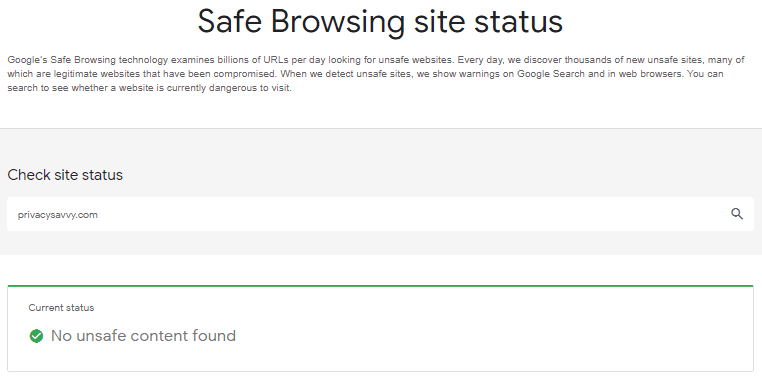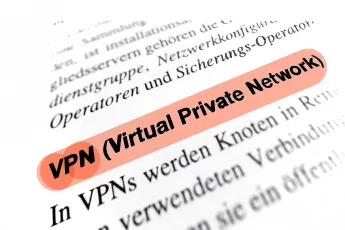Keeping in mind the ever-increasing number of cyberattacks, your website’s security should be your top-most priority. Also, your site acts as the window to your business’s image. That means, keeping it clean and stunning is part of marketing and closing deals.
URL blacklisting is one of many complex challenges you will come across within cyberspace.
Web crawlers and authorities blacklist dubious site URLs and IPs for safety reasons.
According to our market research, Google bans around 10,000 site URLs daily for questionable content. All the URLs that get ban are unreliable sources for the users.
What is a URL blacklist?
URL blacklisting is a method where web crawlers and authorities blacklist or drop a site URL from their corresponding index, such as Bing, McAfee, Google, Norton Web, etc.
They do as such on finding the sites as possibly infected, which may be in different structures. For example, phishing plans, Trojan horses, spams, trolling, etc.
Thus, the authorities and web indexes keep users from pushing forward to the site and advising the website owner, thereby obstructing the attackers’ malicious aims.
For example, antivirus suits can secure their customers’ PCs by denying admittance to websites known for disseminating illegal software, drive-by-downloads, and malicious payloads. (Just to give you an example.)
For site owners, the most significant blacklisting authority is Google. The Safe Browsing section of Google handles the wellbeing of more than 3 billion users every day over the organization’s setup of services, which involve:
- Android
- Chrome
- Gmail
- Google Search
- Google Ads
With the detection of a dangerous site, Safe Browsing will signal the website and show alerts on Google Search and Chrome.
How does a website URL get blacklisted?
Web crawlers, especially Google, are committed to intercepting illegal internet activities and securing online users. The mission requires them to spend resources in clearing and flagging inappropriate sites displaying a frequent threat to the people.
In essence, a web index aims to keep a reputation with its users. The method employed to maintain their reputation intact involves the routine removal of potentially dangerous webpages.
There are endless reasons why a site is blacklisted. Some of the common ones include:
- Phishing plans
- Trojan horses
- Flaming
- Trolling
- SEO spamming
- Downloading undesirable projects
- Hazardous plugins
If any harm is found along these lines, the browser shows security alerts and notifies the users that it is dangerous to proceed. Signs are displayed below the screen to highlight any security issues. (For example, google alerts in cases of a website’s expired security certificate.)
In any case, many site owners don’t know that their site is in danger or hacked. With things being what they are, you might want to check whether your site URL is blacklisted in any of the search engines.
What blacklist warning messages look like?
To detect suspicious website, each browser holds its exceptional variety to alert the user. But since most of the webmasters use Chrome, it looks practical to use it for an example.
You can look at Chrome’s blacklists here: chrome://interstitials/. The content list on the pade describes some of the common browsers and the warnings you can receive after visiting a blacklisted website on these browsers.
The red sprinkle interstitial page (the page that says ‘The site ahead contains malware’) intends to protect and stop the visitor from continuing.
Below are some of the warning messages you can get for malware blacklists:
- Suspicious site
- The Site Ahead Contains Malware!
- The site ahead contains harmful programs.
- This page is trying to load scripts from unauthenticated sources.
- Deceptive site ahead
- Did you mean [site name]?
- This website has been reported as unsafe.
- Warning: potential security risk ahead
- Software is preventing Firefox from safely connecting to this site
- Phishing attack ahead
These messages are not all from the Google browser, and not all programs use the Google Safe Browsing API to confirm if a site is safe to visit. Each caution intends to educate the user that a blacklisted or malware material would be present on the site. And if the user wishes to proceed, it might harm their device and data.
Why websites get blacklisted?
As noted earlier, when any malware or irregularities are present or contain a potential threat to a particular website, the internet authorities such as Google, McAfee, Site Advisor, Norton, Bing, etc., blacklist these malicious sites for safety purposes.
Malware infecting sites can be of many kinds: Trojan horses, phishing schemes, pharma hacks, email, or SEO spams. Notorious cyber-geeks and electronic bots spoil websites with harmful PC code (i.e., web virus).
Hackers use these infected websites to launch spams and phishing campaigns. For example, some infected sites might influence the visitors’s actions such as to scroll through a fake car purchasing page, buy cosmetics, or purchase something identical. This deception can make a site get blacklisted
Usually, the site owner is not even aware of the hacking move by cybercriminals. Thus, it is in the web index’s best interest not to show harmful results, as they need to protect their reputation.
Google and other security concerned authorities daily blacklist thousands of legal and genuine websites such as valid business, academic webpages, healthcare portals, entertainment channels, or more.
Mostly, the blacklisting occurs due to containing malicious code infused without the website owner’s approval. This article will try to give the prescribed methods to help the site owners remain safe and avoid getting blacklisted- Google Safe Browsing Blacklist tool.
Why websites get hacked
Sites can get hacked and discredited in many ways. Below are some of the primary reasons:
- Weak passwords: In 2019, a wide-reaching password analysis research by the UK’s National Cyber Security Centre (NCSC) revealed that ‘123456‘ was among the most common passwords used by people online. Selecting weak passwords leaves website admins exposed to cyber assaults, where convicts attempt to sign in using easy-to-guess password tools.
- Vulnerabilities in server: The site owners and the server admins are sometimes aware of vulnerabilities in their programming servers. Still, they neglect to fix the security trench, leaving them exposed to attacks. The server setup and the configuration are primarily responsible for these issues. Inappropriate acceptance settings can allow malicious programmers admittance to records they should not have the license to get access to.
- Third-party plugins: The use of third-party plugins for sites has grown rapidly for their capacity to provide fascinating site functionality. These third-party bits of code may hold weaknesses that the original site owner might be unaware of. Site admins must update the third-party plugins alongside their CMS (content management system) such as Joomla or WordPress regularly.
- Insecure FTP connections: FTP password or the username handles the infection of any website. Viruses like Trojan/rootkit inhale the FTP connections, which are introduced on the web admin computer.
How to know if a website is blacklisted
You can check whether a website or your own site is blacklisted or not by running different security check tools, such as:
Safe Browsing by Google – best resource that shows issues about the website’s blacklist or health status.

Domain Blacklist Check by UltraTools – a potent threat detection tool to quickly see whether your site is secure or not.
Google Analytics – one of the authentic traffic analysis tools to determine visitors’ flow on your site. Remember, if you witness a sharp decline in your web traffic, one of the primary reasons behind that can be your site getting blacklisted by Google and others.
URL blacklist removal process
If Google, McAfee, or any other authority has blacklisted your site, you must fix the hacked website to remove the issue.
But the good thing is it’s not that tough. The following three steps are all you need to take for removing your site from the backlist:
Step #1. Scan your site for malware and viruses
You can scan your website either manually or through plugins. While the manual scan requires more time and can sometimes lead your portal to break, we recommend using a plugin.
One service that we can recommend here is Malcare. The plugin is easy to use; all you need is to install it and click on a button to scan your site.
Step #2. Clean your site
Typically, the third-party tools available today that help scan websites for malware and viruses, also let you clean the site. For example, if you went with MalCare, its auto-clear feature will clean your website.
Step# 3. Submit your website URl for review
Several blacklisting authorities exist today, but Google and desktop antivirus programs such as McAfee are the most common ones. After getting the security issues fixed on your site, you must appeal these authorities to whitelist your site again.
In the following section, we cover how can you appeal to blacklisting authorities in detail.
How do I remove my URL from the blacklist?
Okay, you found out your website was blacklisted. And fixed the issue already. Now, as stated above, you need to consider working your way with the two most adequate tools (Google & McAfee) to get your site whitelisted again quickly. Here we go:
With Google Search Console you can find and remove a website from Google’s blacklist, and ultimately exclude security alerts from internet browsers as well. Below you go with the steps to follow:
- Step # 1. Sign in to your GSC and choose the “Manual Actions” tab. Listing of your site’s security issue is going to be present there (if any).
- Step #2. Describe how you tackled the issues Google Search Console had highlighted and click on “Request a Review.” Basically, here you are asking Google to review your site again and be cleared of how you fixed the website.
That’s it. After submitting your explanation, be patient and you would receive your site’s new review results from Google within seven days.
McAfee
You need to turn to McAfee’s Trustedsource.org if your website got blacklisted by McAfee and you now are done with fixing issues. Please note some requests require 3-5 business days, while others take extra time for the revision.
- Step #1. Click on “Check Single URL” for submitting your website after signing in.
- Step #2. Choose “McAfee SiteAdvisor/WebControl” and enter your website’s URL. Explain the removal of malware content in the comment section briefly. Remember, a blacklisted website will have a negative status/reputation when you check it at first.
- Step #3. After submission, select the “Track URL Ticket Status” link to trace your site’s revision status. (You might want to bookmark that page to be able to check your website reputation status later.)
Pro tip: You can consider taking a screenshot of your site scan once it’s clean and submit alongside your explanation to the blacklisting authorities.
What is the URL blacklist Avast message?
You by now know that search engines and antivirus programs use a safety measure process of URL blacklisting to drop or avoid a website URL appearing on your browser.
Here you can also use Avast Antivirus to avoid programs and sites that you know aren’t secure. All you need to do is include them in a rejections list as Avast does not treat programs in the list as a threat.
But remember Avast URL blacklisting does not merely reject any site. It excludes the website that has an expected danger of malware or is harmful. Different malware types are present in the cyberspace world, such as spamming, trolling, Trojan horses, worms, etc., which can be a threat to your websites anytime.
URL blacklisting protects and makes sure your admin device (any computer you use to handle your website operations) remains safeguarded from such troublesome viruses by blocking and excluding such websites.
Avast URL blacklisting’s sole purpose is to protect your machine from any malware invasion. Thus, Avast invests in several security-asset programs to ensure your files, data, images, etc. are secure.
Avast Antivirus program searches and scans the whole site to detect any spiteful activity or any potential threat. It drops the site from your quest list without your acknowledgment.
The antivirus program further alerts you about a threat on a webpage and warns you that it is unsafe to proceed with that particular site.
How to stop a website URL from getting blacklisted
Precaution is always better than cure. It is in your best interest to not let your site get blacklisted. And the best thing is, it is not a tough thing to achieve.
The protection and health of your website depend upon many strategies needed to be kept in view for not allowing the blacklisting issue to affect your business. Below you go with some essential tips to protect your website from blacklisting:
- Create strong passwords with difficult-to-guess status usernames (e.g., “Mc43l5@#” instead of “Michael“). Also, remember never to reuse your passwords online, as doing so can fire back at you big time.
- Always check your site for potential vulnerabilities & malware code as routine vigilance can protect your users. You can use free tools like Sucuri for that.
- Use only the third-party plugins known to be safe and update them regularly.
- Never save credentials, like your FTP password, on your unsecured PC.
- Choose a reliable hosting platform that boasts perfect monitoring of blacklisted websites. We recommend picking the best in business, such as Astra, Sucuri, WP Engine, SiteGround, and SiteLock.
- Ensure you consistently scan your PC with ideally one or more best antivirus software. Antivirus programs for your PC would not identify site contaminations, but using a harmful local machine can make a site spoiled, so it’s critical to secure your PC, as well.
Conclusion
URL blacklisting is one of the modern-day business problems in acquiring successful market ventures.
The business world is expanding its wings into the digital world, but there is a massive potential for cybercrimes due to the large number of websites operating globally.
These crimes hold the strength to impact the revenue and reputation of businesses. Hence, enhancing website security and taking precautions to keep it safe from getting blacklisted are critical present-day needs.






